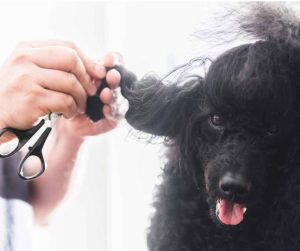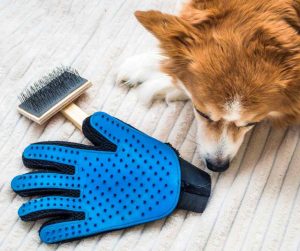My poodle always end up with extremely matted dog hair. It happens every single Winter. Her hair is so soft, and if you skip just one day of no bushing, you will end up with knots so close to the skin (especially her tummy) that is very difficult to detangle.
Now you might ask. Why do I not brush her every day? I am tempted to say that I too have a life, but that will just be another excuse. Our dogs are part of our families and just like we sometimes neglect our own self-care, we do the same to them.
However, sometimes even our best efforts to keep their hair looking its best can be hindered by other factors. In this article, I will delve into the common causes of matted dog hair and provide proven tips on how to prevent and combat them.

Understanding the Causes of Extremely Matted Dog Hair
It is essential to understand that all dogs, regardless of breed or coat type, are susceptible to matted fur. However, some breeds are more prone to it, such as Poodles, Bichon Frises, and Shih Tzus, due to their curly or long hair.
Matted fur occurs when loose hair becomes tangled and clumps together, forming mats. These mats can range from small tangles to large, solid masses that are difficult to remove.
Lack of Grooming
One of the primary causes of matted dog hair is lack of grooming. Regular brushing and combing are essential for maintaining a healthy coat and preventing mats from forming.
When we don’t brush a dog’s coat frequently, loose hair and debris can trap and tangle with existing hair, forming mats.
This is especially true for dogs with long or thick coats, as their hair is more prone to tangling. Therefore, it is crucial to establish a grooming routine and stick to it to keep your dog’s coat in top condition.
Moisture
Another factor that contributes to matted dog fur is moisture. When a dog’s coat gets wet, the hair shafts swell, increasing the likelihood of tangling. This is why dogs who love to swim or play in the water are more likely to develop mats.
Moreover, improper drying of a dog’s coat after a bath can result in the formation of mats. It is essential to thoroughly dry your dog’s coat, especially in areas where mats are more likely to occur, such as behind the ears and under the legs.
Health Issues
In some cases, underlying health issues can also cause matted dog hair. Dogs with skin allergies or infections may experience excessive shedding, which can lead to mats forming.
It is crucial to address any underlying health problems promptly to prevent further matting and discomfort for your dog.
Age and Mobility
Age and mobility can also play a role in the development of matted fur. As dogs age, they may become less mobile, making it challenging for them to groom themselves properly.
This can lead to mats forming in hard-to-reach areas, such as the back and hind legs. It is essential to pay extra attention to grooming and brushing for senior dogs to prevent mats from forming.
Shedding
Dogs that shed a lot are more prone to matted hair. Breeds like Golden Retrievers, Poodles, and Shih Tzus, known for their thick coats and heavy shedding, are prone to mats.

Lack of Nutrition
A poor diet can also contribute to matted dog hair. Dogs need a balanced diet with essential nutrients to maintain a healthy coat.
When their diet lacks these nutrients, their hair can become dry, brittle, and prone to matting.
In conclusion, matted dog hair can be a nuisance for both you and your furry friend.
By understanding the top culprits and taking preventive measures, you can keep your dog’s coat healthy and mat-free.
Regular grooming, proper nutrition, and keeping your dog dry are key to preventing matted dog hair. Remember, a well-groomed dog is a happy and healthy dog.



